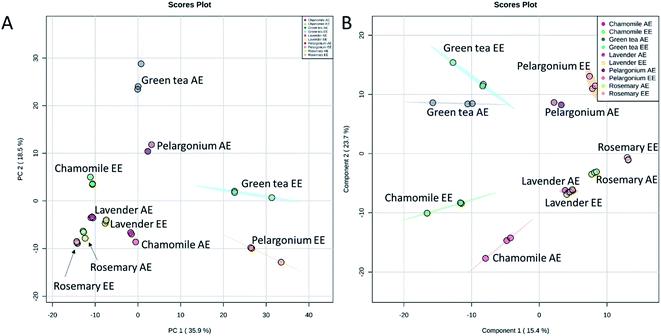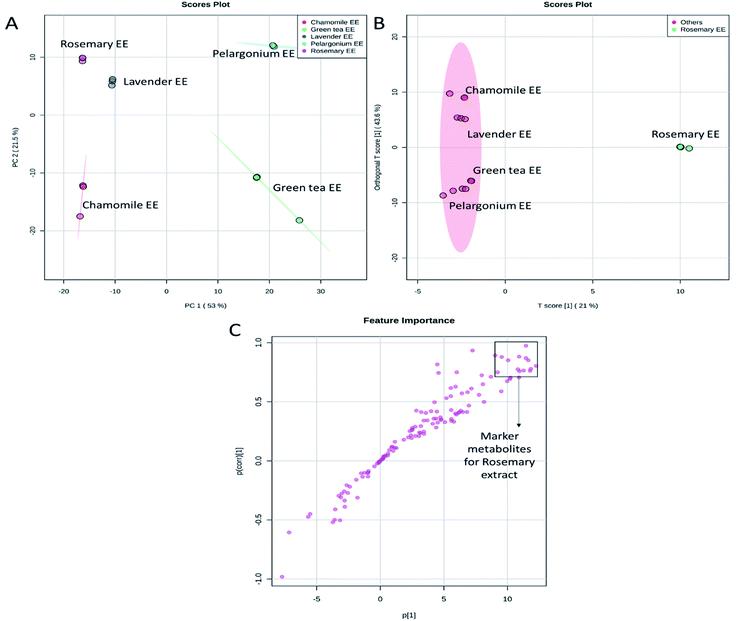Medicinal plants have been a rich source of bioactive compounds for traditional and modern medicine. These plants contain a variety of active ingredients, some of which include:
- Alkaloids: Alkaloids are a class of compounds commonly found in medicinal plants. They possess diverse pharmacological effects, including pain relief, sedation, and stimulation.
- Phenols: Phenolic compounds, like resveratrol in grapes, exhibit potent antioxidant properties. They are associated with cardiovascular health and have anti-inflammatory and anticancer effects.
- Flavonoids: Found in numerous medicinal plants, flavonoids like quercetin have antioxidant, anti-inflammatory, and anticancer activities. They support cardiovascular health and the immune system.
- Terpenoids: Terpenoids are found in plants like artemisinin in sweet wormwood. They possess antimicrobial, anti-inflammatory, antioxidant, and anticancer properties.
However, harnessing the full potential of these natural resources requires a deep understanding of their chemical composition and biological activity. Metabolomics can reveal the intricate metabolic landscape of plants, revealing the properties, concentrations and variability of active compounds.
Medicinal Plants Metabolomics Solutions
 Active Compound Screening in Medicinal Plants
Active Compound Screening in Medicinal Plants
Metabolomics plays a pivotal role in screening for active compounds within medicinal plants. Utilizing the Thermo Scientific Q Exactive Plus LC-MS/MS and the Agilent 7890B GC-MS, it identifies and quantifies a wide range of metabolites, including alkaloids, flavonoids, terpenoids, and polyphenols. By comparing metabolite profiles between different plant samples or treatments, researchers pinpoint potential active compounds responsible for therapeutic effects.
 Quality Control and Quality Assessment of Medicinal Plants
Quality Control and Quality Assessment of Medicinal Plants
To ensure the highest quality standards for medicinal plant products, metabolomics employs HPLC and NMR spectrometry. These techniques establish metabolite profiles that serve as chemical fingerprints for different plant species or varieties. Any deviations from these profiles indicate issues with product quality or adulteration.
 Researching Bioactive Components in Medicinal Plants
Researching Bioactive Components in Medicinal Plants
Metabolomics empowers researchers to delve deep into the composition and variability of bioactive compounds within medicinal plants. This includes alkaloids, flavonoids, terpenoids, and polyphenols. Advanced mass spectrometry and NMR techniques, including the Thermo Scientific Q Exactive Plus LC-MS/MS and the Agilent 7890B GC-MS, provide precise identification and quantification of these therapeutic compounds, enriching our understanding of their presence and concentration within plant samples.
 Toxicity Assessment of Medicinal Plants
Toxicity Assessment of Medicinal Plants
Safety is paramount in medicinal plant research. Metabolomics employs LC-MS, GC-MS, and HRMS to detect and quantify potentially toxic metabolites present in medicinal plants. These tools ensure the safety of herbal remedies and provide a comprehensive assessment of potential risks associated with their use.
Data Analysis for Active Ingredient Analysis of Medicinal Plants
| Data Analysis Content |
Description |
| Compound Identification |
- Identification of compounds in the sample using mass spectrometry techniques (e.g., LC-MS, GC-MS). |
| - Determination of the molecular mass, chemical structure, and retention time of each compound. |
| - Comparison with databases to confirm the identity of compounds, including matching against standard references. |
| Compound Quantification |
- Measurement of the concentration of compounds in the sample using mass spectrometry or chromatography techniques (e.g., HPLC). |
| - Determination of compound concentrations, either absolute or relative, using calibration curves or internal standards. |
| Compound Diversity |
- Identification of the number and types of different compounds present in the sample. |
| - Visualization of compound diversity among different plant samples through heatmaps or Venn diagrams. |
| Compound Variability |
- Assessment of the variability in compound concentrations among samples from different sources, growth conditions, or harvesting times. |
| - Determination of significant differences using statistical methods such as analysis of variance. |
| Compound Correlation |
- Exploration of the relationships between different compounds, whether they exhibit synergy or antagonism. |
| - Visualization of correlations using correlation coefficients or network analysis. |
| Data Clustering & Classification |
- Clustering or classifying samples based on compound concentrations or characteristics. |
| - Automated grouping of plant samples using clustering analysis or classification algorithms. |
| Bioactivity Prediction |
- Prediction of the biological activity of plant samples based on known active compounds and their concentrations. |
| - Use of bioinformatics tools and relevant databases for predictive modeling. |
Case. Metabolite Profiling and Anti-Aging Activity of Plant Extracts: Focus on Rosemary
Background
The study aims to investigate the anti-aging potential of plant extracts, particularly focusing on rosemary, and their metabolite profiles. Skin aging is a concern, and natural compounds from plants can offer potential solutions through their antioxidant properties.
Samples
Five plant extracts were analyzed: lavender, chamomile, pelargonium, green tea, and rosemary. These extracts were selected for their potential anti-aging properties.
Technological Methods
Anti-Aging Activity Assessment: The study evaluated the anti-aging activity of the plant extracts by measuring their effects on enzymes related to skin aging, including tyrosinase, elastase, and collagenase. Inhibition of these enzymes is a key indicator of anti-aging potential.
Antioxidant Activity Assessment: The antioxidant activity of the extracts was determined using the DPPH and ORAC assays. DPPH measures the reducing capacity of antioxidants, while ORAC quantifies peroxyl radical scavenging capacity.
Total Phenolics and Flavonoids Analysis: The total phenolic and flavonoid contents in the extracts were measured spectrophotometrically using folin ciocalteu reagent and aluminium trichloride assay, respectively. These compounds are known for their antioxidant properties.
UPLC-HR-ESI-MS/MS Analysis: Metabolite profiling was conducted using UPLC-HR-ESI-MS/MS in both negative and positive ionization modes. Various classes of phenolic compounds were identified in the extracts, including flavonoids, hydroxycinnamic acids, coumarins, diterpenoids, and fatty acids.
Multivariate Data Analysis: Principal component analysis (PCA), partial least squares-discriminant analysis (PLS-DA), and hierarchical cluster analysis (HCA) were employed to compare the chemical profiles of the plant extracts and identify distinctive metabolites.
Results:
Anti-Aging and Antioxidant Activities: Rosemary extract showed the highest anti-aging and antioxidant activities among the tested extracts. It exhibited strong inhibition of skin aging enzymes and had the highest DPPH and ORAC radical scavenging capacities.
Metabolite Identification: Metabolite profiling revealed various phenolic compounds, including diterpenoid abietatrienes, phenolic acids, and glycosides of quercetin and luteolin, in rosemary extract. These compounds correlated positively with antioxidant and anti-aging activities.
Cluster Analysis: Cluster analysis demonstrated clear differences among the plant extracts. Rosemary was distinctly separated from other extracts based on its metabolite profile and anti-aging potential.
Implications: Rosemary, with its rich phenolic content, particularly carnosic acid and its derivatives, showed significant promise as an anti-aging agent. These compounds exhibited antioxidant and anti-inflammatory properties, which are essential for combating skin aging.
Future Research: The study suggests that rosemary extract, due to its cost-effectiveness and safety, deserves further investigation for potential use in topical preparations aimed at preventing or treating skin aging.
 Score plots of PCA (A) and PLS-DA (B) based on the UPLC/MS data from rosemary, lavender, green tea, pelargonium and chamomile aqueous (AE) and ethanoic (EE) extracts.
Score plots of PCA (A) and PLS-DA (B) based on the UPLC/MS data from rosemary, lavender, green tea, pelargonium and chamomile aqueous (AE) and ethanoic (EE) extracts.
 Score plots of PCA (A), OPLS-DA (B) and S-plot of OPLS-DA (C) based on the UPLC/MS data from rosemary, lavender, green tea, pelargonium and chamomile ethanoic (EE) extracts.
Score plots of PCA (A), OPLS-DA (B) and S-plot of OPLS-DA (C) based on the UPLC/MS data from rosemary, lavender, green tea, pelargonium and chamomile ethanoic (EE) extracts.
Reference
- Salem, Mohamed A., et al. "Using an UPLC/MS-based untargeted metabolomics approach for assessing the antioxidant capacity and anti-aging potential of selected herbs." RSC advances 10.52 (2020): 31511-31524.


 Score plots of PCA (A) and PLS-DA (B) based on the UPLC/MS data from rosemary, lavender, green tea, pelargonium and chamomile aqueous (AE) and ethanoic (EE) extracts.
Score plots of PCA (A) and PLS-DA (B) based on the UPLC/MS data from rosemary, lavender, green tea, pelargonium and chamomile aqueous (AE) and ethanoic (EE) extracts. Score plots of PCA (A), OPLS-DA (B) and S-plot of OPLS-DA (C) based on the UPLC/MS data from rosemary, lavender, green tea, pelargonium and chamomile ethanoic (EE) extracts.
Score plots of PCA (A), OPLS-DA (B) and S-plot of OPLS-DA (C) based on the UPLC/MS data from rosemary, lavender, green tea, pelargonium and chamomile ethanoic (EE) extracts.

